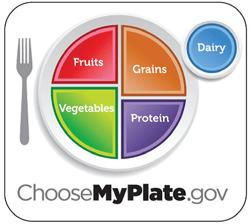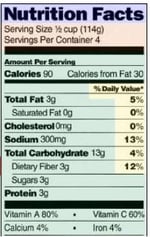4-3-2-1-0: Steps To a Healthier You
Eat 4 family meals each week
Life can get really busy. This makes it hard to plan sit-down meals together with your family. Eating together is one of the most important things you can do for your family’s health. Family meals help kids do better in school, feel better about themselves, and have better social skills. Try these things:
- Make eating together a priority. Plan set days and times on the calendar to eat family meals.
- Gather all who are at home at meal times. Eat together in the same room, facing each other. Move to a table in a dining area, if able.
- As you get better with eating together, try removing distractions. Turn off screens so you can talk with one another.
- Plan set days and times on the calendar to eat together. Start with 4 times per week. This could be breakfast, lunch, dinner or even a snack time. Clear off an eating surface like a table so the family has a place to eat.
Eat 3 meals a day
Everybody, especially kids, needs energy and nutrition throughout the day. Skipping meals can caused tiredness and lack of focus. Missing a meal can make it hard to get all the nutrients your child’s body needs to grow and thrive. Aim to eat within an hour of waking and to have a meal about every 3 to 4 hours. Plan a snack between meals if longer than 3 to 4 hours.
body needs to grow and thrive. Aim to eat within an hour of waking and to have a meal about every 3 to 4 hours. Plan a snack between meals if longer than 3 to 4 hours.
- Enjoy meals. They should last about 20 to 30 minutes.
- Use MyPlate as your guide. For balanced nutrition, aim for at least 3 out of the 5 food groups at each meal. Aim for 5 servings of fruits and vegetables each day. For busy nights, try bagged salads or steam bag vegetables. Keep a bowl of fresh fruit on the counter or canned fruit in natural juice for quick use. Limit eating out to no more than 1 or 2 times per week. Food cooked at home is almost always healthier. It is lower in unhealthy fats and sugars than restaurant food.
Limit screen time to 2 hours or less each day
Too much screen time can prevent:
- getting enough physical activity
- doing homework
- spending time with friends and family and
- getting enough sleep.
Work together to decide how much screen time kids can have each day. This will leave time for other things they enjoy. Screen time includes TV, computer (not including homework), video games, smart phone, and tablet.
- Set limits on screen time. If your child is on screens more than 2 hours per day, start by cutting back by 30 minutes each day. Caregivers can set screen time limits by setting a timer and putting screens or remotes out of reach. They can also use an app to keep track of time spent on smart phones.
- Think of activities your family enjoys that don’t include a screen. For example: moving your body, playing music or instruments, cooking, or arts and crafts.
- Start a family game night. Stock up on board games to keep things fun.
- Schedule a “black out” time period with no TV or Wi-Fi.
- Remove the TV from the bedroom. Children and teens with bedroom TVs score lower on school tests and are more likely to have sleep problems.
- Put away smart phones and tablets at least 1 hour before bedtime. Leave them to charge outside your child or teen’s bedroom.
Get at least 1 hour of physical activity every day.
Physical activity means moving your body in a way that you enjoy. Sometimes physical activity makes your heart beat faster and your breath harder. Other times it makes your muscles stronger or stretches and relaxes you. With regular physical activity, kids and teens are more likely to have a stronger body and mind.
- Start out slow. If you’re not very active, start with 1 or 2 days a week. Over time, increase the amount of time and number of days you are active. Walking, swimming and stretching are good exercises to start with.
- Take quick exercise breaks. For every 30 minutes spent sitting, get up and move for 5 minutes. Set a timer to remind you. Try dancing, jumping jacks, jogging in place, squats, crunches, marches or lunges.
- Do activity together. Kids are much more likely to be active when adults in their home are active with them. Play tag, dance, take walks, bike rides, or try out a class.
- Look for exercise programs at your local YMCA, recreation departments, Boys and Girls Clubs, or school. If needed, ask if they offer help with membership fees.
Have 0 sugary drinks
Too much soda, juice, lemonade, chocolate milk and sports drinks can be bad for your health. Choose drinks with less than 3 grams of sugar per serving. (This doesn’t include white because it has
- You can also include sugar-free flavored drinks once in a while like:
– Crystal Light® or Crystal Light Pure®
– MiO® liquid water enhancer drops
– Propel® or Powerade Zero®
– Sparkling ICE® waters
Watch a short video with your family, here: https://fast.wistia.net/embed/iframe/6qhmtxbdpz?popover=true
Make a plan:
Use what you learned in this handout to set 1 to 2 realistic goals together as a family. For example: “We will go for a 30 minute family walk 3 nights each week”. Post the goals in an area where everyone can see them.
Write your family’s goals here:
1.
2.



